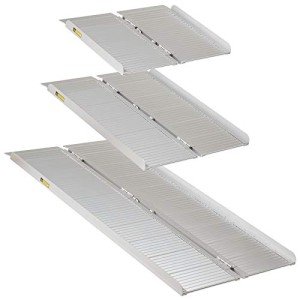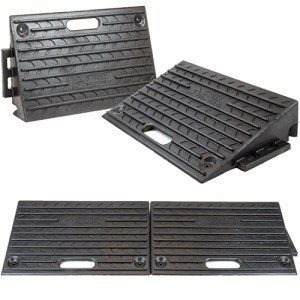Folding Ramp For Wheelchair
Add a reviewOverview
-
Sectors Digital Marketing and Business Development
-
Posted Services 0
-
Viewed 11
-
Industry the Startup Belongs to QY
Company Description
What’s The Job Market For Ramps For Disabled Professionals?
Understanding Ramps For Disabled Accessibility: A Comprehensive Guide
In today’s world, making sure accessibility for people with specials needs is an important element of neighborhood preparation and development. One of the important components of ease of access functions is ramps, which offer a necessary means of navigation for those using wheelchairs, walkers, or merely requiring an extra bit of assistance. This post intends to offer an overview of ramps for disabled people, using practical insights and guidance on their style, types, benefits, and best practices, along with a thorough FAQ section.

The Importance of Ramps for Disabled Accessibility
Ramps play a critical function in enhancing the mobility and independence of people with impairments. By making it possible for simpler access to structures, public spaces, and transportation, these structures considerably reduce the barriers that individuals might encounter. Below are some bottom lines that highlight their significance:

- Inclusion: Ramps promote an inclusive society, enabling people with disabilities to take part in daily activities, neighborhood events, and work.
- Security: They offer a safer alternative to stairs, reducing the risk of mishaps for both users with mobility difficulties and caretakers.
- Legal Compliance: Many nations have actually established laws and requirements for accessibility (like the Americans with Disabilities Act in the USA), requiring the setup of ramps in public buildings.
Table 1: Accessibility Legislation Overview
| Region | Legislation | Key Provisions |
|---|---|---|
| United States | Americans with Disabilities Act (ADA) | Mandates accessible designs for public areas and buildings. |
| Canada | Availability for Ontarians with Disabilities Act (AODA) | Requires public-sector companies to follow availability requirements. |
| European Union | Ease of access Act | Establishes common standards for accessibility throughout member states. |
Types of Ramps
Ramps are available in numerous types, each developed to match specific needs and contexts. Below are the most common kinds of ramps utilized for disabled access:
- Permanent Ramps: Installed as a part of the building structure, often made from concrete or wood.
- Portable Ramps: Lightweight and developed for temporary use, typically used for specific access to cars or events.
- Suction Cup Ramps: Used for mobility help, these ramps can be connected to automobiles, offering a flexible option for those who take a trip.
- Limit Ramps: Designed to bridge the space between 2 surface areas at doorways or entry points, helping with smooth transitions.
Table 2: Ramp Types and Features
| Type | Material | Best Use Cases | Pros | Cons |
|---|---|---|---|---|
| Permanent Ramps | Concrete/Wood | Public buildings/residential | Long lasting, low upkeep | Costly to install |
| Portable Ramps | Aluminum/Fiberglass | Events/vehicles | Easy to transfer | May not support heavy weights |
| Suction Cup Ramps | Numerous | Vehicles | Versatile and adjustable | May need more upkeep |
| Limit Ramps | Rubber/Wood | Doorways | Basic installation | Restricted height capability |
Benefits of Ramps
The setup of ramps supplies numerous benefits, as outlined listed below:
- Enhanced Mobility: Ramps allow users much easier motion up and down inclines, minimizing stress and fatigue.
- Self-reliance: With the accessibility of ramps, people with mobility impairments are most likely to navigate their surroundings without help, increasing their confidence and autonomy.
- Increased Opportunity: Accessible ramps make sure that people with specials needs can reach workplaces, schools, and social spaces, promoting more comprehensive participation in society.
Finest Practices for Ramp Design
Producing efficient and safe ramps requires adherence to specific guidelines and principles. Here are some finest practices to consider:
- Follow Accessibility Standards: Always speak with regional accessibility standards to guarantee compliance with regulations.
- Select the Right Slope: The ideal slope ratio is normally 1:12 for wheelchair access. This indicates one system of vertical rise for every single twelve systems of horizontal run.
- Non-Slip Surfaces: Use products and finishes that supply adequate grip, especially during damp or icy conditions.
- Add Handrails: Installing durable handrails on both sides of the ramp can supply additional support and security for users.
- Routine Maintenance: Conduct routine inspections to determine wear or damage and carry out timely repair work as needed.
Table 3: Ramp Design Considerations
| Style Aspect | Recommendation | Significance |
|---|---|---|
| Slope Ratio | 1:12 ratio | Makes sure ease of use for wheelchair users |
| Width | Min. 36 inches | Permits safe passage for users and caretakers |
| Surface Material | Non-slip, long lasting product | Prevents mishaps and offers durability |
| Handrails | Minimum 34 to 38 inches above ramp surface | Supplies extra assistance for users |
| Turn-around Space | Min. 5ft x 5ft for changes in direction | Accommodates users to pivot safely |
Frequently Asked Questions (FAQs)
1. Who certifies as disabled for ramp availability?
The term “disabled” differs across legislation and companies. Typically, it refers to people with physical impairments that limit their mobility or ability to navigate stairs, including those utilizing wheelchairs, walkers, or other mobility help.
2. Are ramps needed in all public structures?
Yes, a lot of countries mandate that public structures be available to people with specials needs through ramps, as outlined in ease of access legislation.
3. Can I develop my ramp, or do I require an expert?
While some property owners may opt to build their ramps, working with a professional with proficiency in ADA compliance is suggested to ensure security and regional code compliance.
4. How do I preserve a portable ramp?
Routinely check the ramp for indications of wear and keep it clean from particles. Make sure that any movable parts operate correctly, and shop it in a dry location to extend its life-span.
5. What is the typical cost of setting up an irreversible ramp?
The expense differs extensively based upon products, style, and labor but can range from ₤ 1,000 to ₤ 5,000 or more depending upon the website conditions and complexity involved.
Ramps for disabled people are a vital element in fostering available and inclusive environments. Comprehending the types, advantages, legal ramifications, and finest practices for ramps can contribute substantially to boosting the lifestyle for people with mobility challenges. As neighborhoods continue to develop and modify their facilities, ensuring ease of access must stay at the forefront of planning efforts, making it possible for everybody to navigate their environments efficiently. Awareness, education, and commitment to ease of access will cause a more inclusive society for all.
